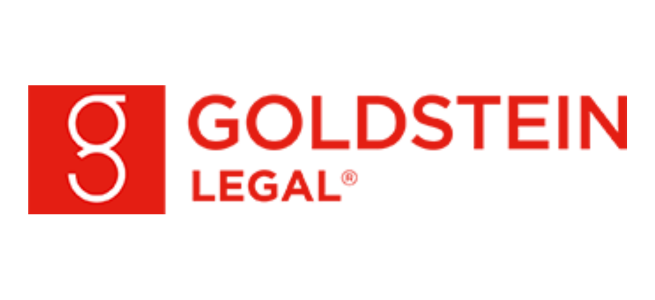Q&A with Goldstein Legal – Coronavirus Job Retention Scheme
As part of their response to the Covid-19 pandemic, the Government announced the introduction of the Coronavirus Job Retention Scheme. With a view to answering common questions, Goldstein Legal will provide regular updates through this blog to help clarify the Scheme and its provisions.
Readers are advised that the below information is accurate at the date of publication. It is our intention to keep this information as up to date as possible and revise as necessary when new information comes to light.
What is the Scheme?
The Job Retention Scheme is a government initiative designed to avoid redundancies. The Scheme allows businesses to furlough employees provided they were already working for the company on or before the 19th March 2020 (please note, the date was originally the 28th of February but has now been extended.) However, it is worth noting that the employee needs to have been on the PAYE payroll on or before the 19th of March, and an RTI submission must have also been made to HMRC on or before the 19th of March. An employee can be ‘furloughed’ if they are unable to work for a period of 3 weeks of more during the current virus outbreak. Instead of being laid-off, the employee is kept on the payroll and the employer can claim up to 80% of their wage through the Scheme (to a maximum of £2,500 per month.) An employer may decide to ‘top up’ the employees wage above the 80% threshold but will be unable to claim the additional amount. Non-cash benefits such as healthcare cover, or a company car allowance cannot be included, nor can tips or discretionary bonus or commissions. Only an employee’s actual salary before tax as at the 19th March is payable, this can include fees, compulsory commission payments, and past overtime. Student loans and apprenticeship levies should continue to be deducted in the normal way.
Please note, if your organisation already receives public funding for staff costs it is expected that this public funding will be used to continue to pay employees and you may not be able to furlough.
What are the most recent changes to the Scheme?
It has recently been announced that the Scheme will continue after the 31st July, but not in its current form. The Scheme closes to new entrants from the 30th June, after which employers may only claim payments for employees who have been furloughed for at least 3 weeks. This means that the 10th of June is the last date to register employees who had not previously been furloughed, as they will need to have been furloughed for at least 3 weeks by the 30th June.
Through the months of August, September and October 2020, employers will be required to part-subsidize payments previously received under the Scheme. From the 1st August, the government will continue to pay 80% of an employee’s wage (up to £2,500 per month), however the employer will be required to pay National Insurance, pension contributions, and other such payments. From the 1st of September the government contribution to the employee’s wage will reduce to 70% (to a maximum of £2,187.50 per month), and the employer will be required to pay NI/pension and other contribution as well as 10% of the employee’s wage to top the amount back up to the 80% figure. Similarly, from the 1st of October, the government will pay 60% of the employee’s wage (to a maximum of £1,875 per month) and the employer will be required to pay 20% of the employee’s wage as well as NI/pension and other such contributions.
The Coronavirus Job retention Scheme will cease after 31st October 2020.
Employers that wish to bring furloughed employees back to work part-time are able to do so from the 1st of July. Employers will need to communicate this to all relevant employees in writing, and as a temporary amendment to their employment contract if the employee was previously full-time. Where a full-time employee does return to work part-time, the employer is able to continue to claim furlough for the hours not worked in accordance with the existing Scheme and above changes. When submitting a claim, an employer will be required to submit data explaining the hours worked and not worked.
How do I apply?
The Government online portal launched on the 20th April, and runs through HMRC. Employers are required to self-certify that they have furloughed employees. You must have written to your employees to furlough them and kept a copy of each letter (the retention period is 5 years.) While the employee need not have agreed to be furloughed, you must have written confirmation from each employee that they agree to receive less than their contractual wage under the Scheme.
In order to claim under the Scheme, you will need the following:
- your ePAYE reference number
- your Government Gateway ID and password
- your Self-Assessment UTR (Unique Tax Reference), Company UTR or CRN (Company Registration Number)
- the number of employees being furloughed and their details, including NI numbers
- the claim period (start and end date)
- payroll/works number for the employees you want to furlough
- amount claimed (per the minimum length of furloughing of 3 weeks)
- your bank account number and sort code
- your contact name
- your phone number
Once a claim is submitted, employers must keep a print out of the reference number provided by the online portal as it will not be sent by email. If there are no issues with the application, employers can expect to receive the furlough funds 6 working days after the online request was lodged. Employers can claim every three weeks and the money will be paid via BACS. You must pay the whole of the grant received to employee/s, less deductions for income tax and NI, without deducting any kind of admin fee.
Payments received under the Scheme are made to offset deductible revenue costs. Any funds received must therefore be included in your calculation of taxable profits for income and corporation tax purposes (in accordance with normal principles.) You can deduct employment costs as normal when calculating taxable profits.
How do I furlough employees?
The employee must be advised of an employers intention to furlough them in writing. If there is no lay-off clause in their employment contract, the employee must also agree to be furloughed. The letter to each employee should include, as a minimum: the employees agreement to the furlough, when the period of furlough commenced, how the furlough can be brought to an end, and an explanation that the employee is not able to carry out any work during the period. An employer may also wish to include whether they will allow the employee to seek other work during furlough. In relation to whether an employee can be asked to take annual leave during their furlough, please see the relevant section below.
If an employee does not agree to being furloughed, an employer may have to proceed with a redundancy process if necessary, but only after considering all other alternatives (see below.)
It is important to note that if an employer intends to vary the contracts of 20 or more employees within one business, the collective consultation rules apply, and they should consult with the unions/representatives and file a HR1 form. As an employer is not making redundancies at this stage, they will not have to wait 30 days before furloughing employees. If there is no recognised union or elected representatives, and given that time is of the essence, employers will probably take a view that these are extraordinary circumstances and that they will take their chances in consulting directly with employees. As no-one is being made redundant at this stage, an employee cannot claim a protective award, and if redundancies are considered later an employer must go through the full collective consultation.
Who can be furloughed?
The following types of employees are eligible to be furloughed provided they were employed and enrolled on PAYE prior to the 19th March 2020:
- Full-time employees on any type of contract

- Part-time employees on any type of contract
- Fixed-term employees
- Apprentices
- Agency employees (including those paid through umbrella companies)
- Employees on flexible or zero-hours contracts
- Office holders – including company directors
- Salaried partners in an LLP
Self-employed individuals cannot be furloughed, but may be eligible for a government grant. It is the intention of HMRC to contact self-employed individuals that qualify by mid-May, with a view to begin making payments in early June. As with the furlough provision, the grant will initially be for three months, and losses arising in the years 2016/17 to 2018/19 are deducted before calculating the average profits for the purposes of the grant. If a self-employed individual has operated more than one business in a year, those profits will be added together, losses deducted from profits, or losses added together as appropriate, to calculate the figure to use for each tax year.
If a fixed term contract comes to an end during the furlough period, and is not renewed or extended, then the employer cannot continue to claim for the contracted employee under the Scheme.
Employees on unpaid leave, or a sabbatical, are able to be furloughed if their leave commenced after the 28th of February 2020 (please note, it has not been confirmed whether this date will change to the 19th of March.) If the employee commenced their unpaid leave prior to the 28th of February, they cannot be furloughed until the unpaid leave comes to an end on the date agreed at the commencement of the leave.
If an employee has 2 jobs, it is possible for them to be furloughed from both, just one, or neither.
It has also been confirmed that a company director that is typically paid annually may also be furloughed through the scheme.
What if the 80% means below minimum wage?
A furloughed employee will not be carrying out any work, so this is not a problem. However, if the employee will continue to complete training for the employer whilst furloughed then they must receive minimum wage – please see the below for further information.
Can an employee continue online or other training while furloughed?
While employees are not permitted to work during furlough, they are able to continue to undertake training that is part of their employment and must be paid at least minimum wage for this. This means that employers must top-up the wage of apprentices and other such types of workers, if the 80% under the Scheme falls below minimum wage. However, the employer and training provider should consider whether a break in learning would be more appropriate and report any formal breaks of more than four weeks to the Education and Skills Funding Agency.
What about employees that have left during the pandemic?
Employers are permitted to take back an employee that left during the period after the 28th of February and before the 19th of March, regardless of whether the reason for leaving relates to resignation, redundancy or dismissal (please note, this date may be extended to the 19th of March but this has not yet been confirmed.) However, if the employee had already left before returning, they will generally have broken their continuity of service and so come back without their earlier employment rights. Additionally, if an employer wishes to dismiss the employee in the future, the business will still be subject to any relevant unfair dismissal claims or similar. For this reason, many employers are choosing to take back employees on the basis that their redundancy, dismissal, or resignation date has simply been extended until 31st May or a later date if the Scheme is extended.
What if a TUPE has taken place?
Initially the Government guidelines suggested that a TUPE that took place after the 28th of February 2020 meant that the employee could not be furloughed. However, it has now been confirmed that TUPE transfers after this date do not prevent an employee being furloughed, provided they were employed in the same role on or before the cut-off date and the PAYE succession rules apply. Please note, it is unclear whether the above date has also been extended to the 19th March in respect of TUPE workers.
What about employees who are sick?
Employees on sick leave can either be placed on SSP or furloughed, employers cannot claim both SSP and furlough for the same period. If an employee is placed on SSP, once the period of sick leave ends, they can then be furloughed provided they were employed and on payroll before the 19th March 2020. Those that are self-isolating may be placed on SSP for the period of isolation. There is conflicting information as to whether the long-term sick can be furloughed.
Is redundancy an option?
If an employer proceeds with redundancy, without first having considered furloughed, this is likely to be an unfair dismissal. It is anticipated that a tribunal would take the view that the employer has not done everything possible to avoid redundancies and so those with over two years’ service may successfully claim unfair dismissal, subject to there being extenuating circumstances. The Government have also made it clear that any payments under the Scheme are not to be used to substitute redundancy payments, and that HMRC will be closely monitoring this once the scheme has closed.
Can an employee be furloughed multiple times?
It has been confirmed that employees can be furloughed, brought back to work, and then re-furloughed multiple times. The only requirement for the Job Retention Scheme is that each period of furlough lasts for a minimum of three weeks. This would allow employers to rotate who is working and who is furloughed, if needed. Each new period of furlough should be agreed with the employee and documented.
What about pension contributions?
Employers should continue to make the statutory minimum pension contributions and deduct any employee contributions. However, it may be possible for both the employer and employee to suspend payments by mutual agreement. Employers are encouraged to speak to their pension providers.
What about annual leave?
Annual leave will continue to accrue as normal under furlough because the contract of employment will still be in existence during this period. Holiday can also be taken by employees while they are on furlough, and they are entitled to their full holiday pay. Many employers have asked whether they can insist on holidays being taken whilst the employee is furloughed. While employment lawyers believe this is the case, some commentators believe that insisting an employee takes a holiday during furlough may amount to abuse. Therefore, when placing an employee on furlough for three weeks, the best approach to take is to advise them that week four will be holiday and they will then be furloughed again. Employers should also be aware that there will be an amendment to the Working Time Regulations meaning that employees can carry over up to four weeks of accrued leave into the next two leave years.
Those on sick leave and maternity/adoption/shared parental/paternity leave cannot be asked to take holiday.
What if an employee is pregnant or on maternity leave?
Employees currently on maternity leave should remain on maternity leave and should not be furloughed until their period of maternity leave has ended.
Those employees who are currently pregnant and due to start Maternity Leave, should start Maternity Leave as usual. If earnings have reduced due to a period on furlough prior to their Maternity Leave starting, this will not affect qualifying earnings and Statutory Maternity Pay. If a pregnant woman is furloughed, calculation of her maternity leave at 90% for six weeks will be based on her contractual earnings before furlough.
Can a furloughed employee work in a second job?
Yes, furloughed employees can take a new job with a different employer while furloughed from their main job without it jeopardising their main employer’s entitlement to claim under the Job Retention Scheme. It is believed that this is to enable furloughed employees to help with jobs seen as essential during the current crisis, such as food production, hospital assistance, etc. Employees should comply with any existing provisions in their contracts of employment about second jobs, such as seeking permission from their main employer and not working in a competing business etc.




